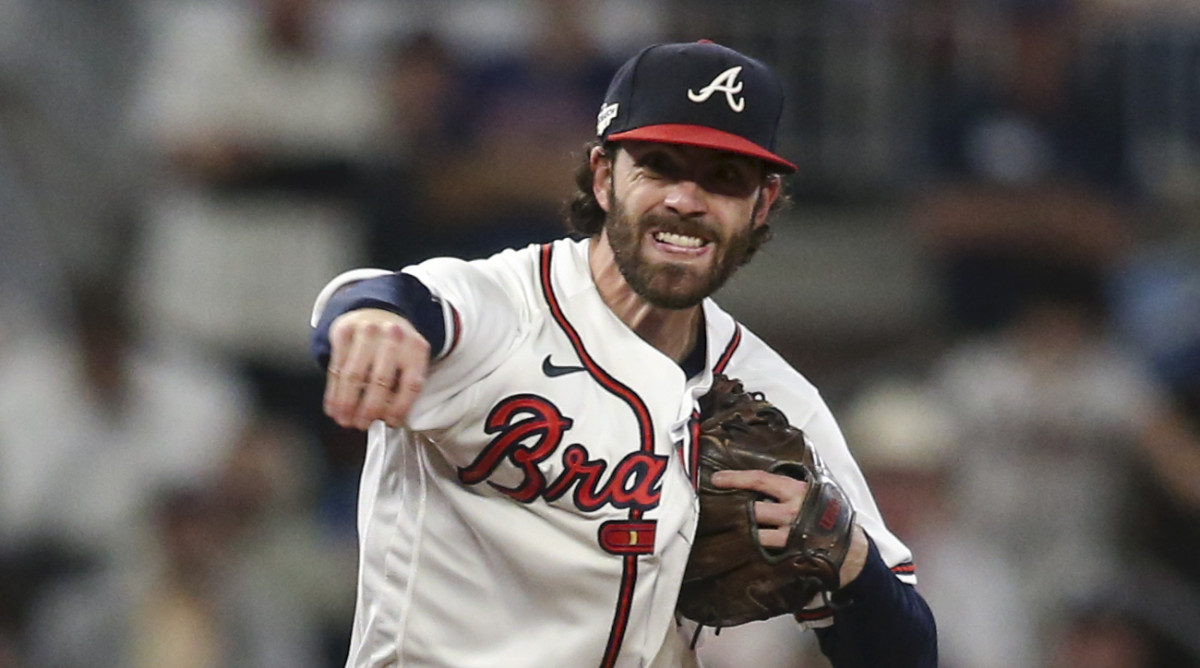Cubs’ Dansby Swanson Signing Pries Open a New Contention Window
Two years ago, the Cubs began dismantling the core members of the roster that brought them their first World Series title since the fall of the Ottoman Empire. They declined to tender a contract to slugger Kyle Schwarber and then watched Jon Lester leave in free agency. Eight months later, they traded shortstop Javier Báez, first baseman Anthony Rizzo and third baseman Kris Bryant. Chicago released Jason Heyward in November, and earlier this month let catcher Willson Contreras sign with the division rival Cardinals.
On Saturday, less than two weeks after completing their demolition derby, the Cubs took a crucial step toward building their next contender when they reportedly agreed to a seven-year, $177 million contract with shortstop Dansby Swanson. The deal, the terms of which were first reported by Russell Dorsey of BallySports, includes a full no-trade clause.
Swanson, who turns 29 in February, is the last of this offseason’s big four free agent shortstops to come off the board. He’s also widely considered to be the weakest option of the quartet, though his particular strengths make him an excellent fit for the Cubs.

Chicago has made it a priority to improve its defense before next season, and Swanson is an elite defender. He won his first career Gold Glove and led all MLB shortstops with 21 outs above average last season. His arrival slides Nico Hoerner, who was perhaps the second-best defensive shortstop, over to second base, a position of weakness for the Cubs last year. They also signed Cody Bellinger, who despite his steep decline at the plate hasn’t slipped in center field. Together, the up-the-middle trio of Swanson, Hoerner and Bellinger is a major defensive upgrade, which is especially important for a Cubs team that features three starters—Marcus Stroman, Kyle Hendricks and newly acquired Jameson Taillon—who rely more on generating soft contact than striking out batters.
Swanson has also continued to improve as a hitter. Last season, he set career highs in batting average (.277), hits (177), runs (99), RBIs (96), stolen bases (18) and OPS+ (115) while hitting 25 home runs, though he also struck out more than ever before (182 K). His plate discipline remains a concern; in fact, his 7% walk rate was the lowest of his career. This could become a problem in the final years of the contract if he loses some power and bat speed during his mid-30s. Still, he does almost everything well as a hitter, even if he doesn’t excel in any particular area.
After finishing third in the NL Central with a 74–88 record, the Cubs are going to need a lot more than Swanson if they are going to make a postseason push in 2023. They could use a new catcher to replace the departed Contreras—the veteran Yan Gomes is currently projected to start—and the back half of their lineup is shambolic. Acquiring a middle-of-the-order first baseman and a designated hitter would go a long way toward beefing up their offense. Their estimated luxury tax payroll is up to $203 million, including Swanson, so they should have enough flexibility to sign one or two impact hitters. Jurickson Profar, Michael Brantley, Justin Turner, Matt Carpenter and Gary Sánchez would all make sense.
The Cubs still are not a good team, but they are better than they were at the start of the offseason. In signing Swanson, the Cubs are adding a clubhouse leader with a winning pedigree. This is a great move, even though he almost certainly won’t lead them to the playoffs next season. They are playing the long game. For the sake of Chicago, hopefully not as long as the last time.
